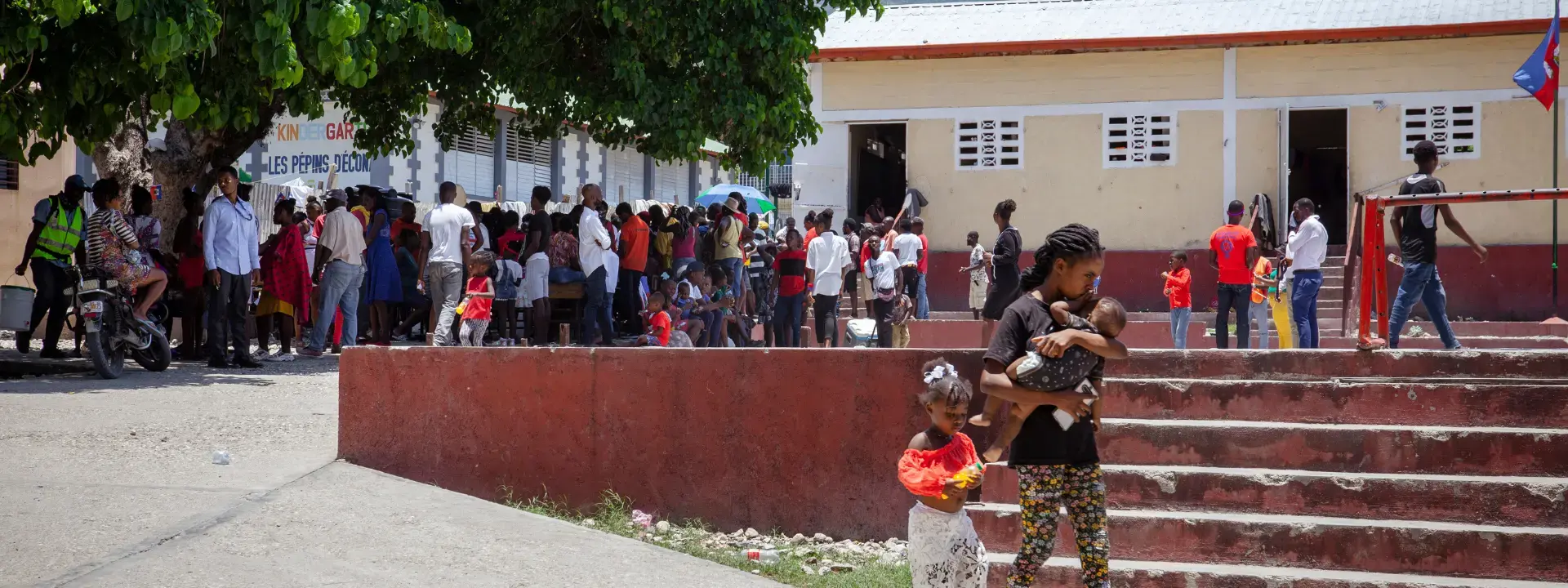Working to Ensure Every Person Can Choose and Decide About Their Sexual and Reproductive Health
Every human being has the right to make decisions about their sexual and reproductive health, including the ability to reproduce and the freedom to decide how, when, and how often.
Access to accurate information, combined with the contraceptive method of their choice – which must be safe, effective, and affordable – is vital for individuals to achieve ideal sexual and reproductive health. It is equally important to have the information necessary to protect against sexually transmitted infections. When deciding whether or not to have children, women must have access to the services that ensure a healthy pregnancy, safe childbirth, and a healthy baby.
This is why the United Nations Population Fund (UNFPA) works in partnership with a broad range of strategic allies to achieve universal access to sexual and reproductive health rights, including family planning.
It is a fact that greater access to safe, affordable, and effective contraceptive methods has enabled more choices and empowered individuals to make responsible reproductive decisions. The use of contraceptives has also contributed to improved maternal and child health by preventing unwanted or closely spaced pregnancies.
Our Challenge
In many regions, the use of contraceptives saw a significant increase during the 1990s, but in the following decades, that progress slowed. The proportion of women aged 15 to 49, married or in a partnership, with unmet family planning needs is 10% in Latin America and 17% in the Caribbean. The contraceptive prevalence rate (any method) is 74% in Latin America and 61% in the Caribbean. Modern contraceptive use stands at 67%. On average, unmet family planning needs remain around 10%.
The equity gap in the region is reflected in inequalities in access to basic social services and reproductive health services. Our challenge lies in ensuring the full exercise of sexual and reproductive rights for the most excluded populations, such as the poorest, those living in rural areas, Indigenous peoples, people of African descent, undocumented migrants, LGBTQ+ individuals, adolescents and youth, and those affected or displaced by disasters.
Geographical and service quality barriers play a central role in limiting access to reproductive health services. It is critical to reach territories where transportation access is limited and where services are distant, while also ensuring these services have the capacity to respond effectively and make timely referrals.
Another challenge in the region is that some countries have legal barriers that affect access to sexual and reproductive health services, including the use of contraceptives, the availability and use of legal emergency contraception, abortion, and post-abortion care – including post-abortion contraception.
This is especially evident in the delivery of contraceptives and counseling services for adolescents. Some countries also have restrictive regulations, such as requiring prescriptions from doctors or pharmacists to purchase contraceptives.
The Opportunity
Beyond the need to reach the most disadvantaged sectors, sexual and reproductive health services must also examine how to promote greater use and adherence. This involves considering provider behaviors and the types of services and products offered.
In the field of family planning, there is a need to align services more closely with changing sexual behaviors. Women are seeking a wider range of contraceptive options, varying hormone levels, and access to female condoms.
There is also a growing need to include voluntary surgical contraception for men. Serving the needs of adolescents—who are beginning sexual activity at younger ages and whose cultural relationship patterns are shifting (e.g., fewer stable partners, more sexual partners)—is part of the new complexity in providing quality care.
Our Strategy
UNFPA will continue addressing one of the main challenges in implementing public policies in both the health sector and other social sectors: the need to build capacity and advocate with sub-national and local governments. This work must be accompanied by strengthening community monitoring capacities, including tracking budget execution in areas related to the Cairo agenda.
At the local level, key issues in sexual and reproductive health include improving supply distribution systems to local sales points in poor areas.
Despite significant progress in purchasing and storing supplies in countries across the region, these often fail to reach the communities where women with unmet family planning needs live. Continued action is needed to bring about change—so that every person can feel fully confident in their right to quality sexual and reproductive health.
More Highlights
-
Adding it Up 2014
Other Resources
- Adding it Up: Investing in Sexual and Reproductive Health 2014 – [English | Spanish]
- Executive Summary of Adding it Up: Investing in Sexual and Reproductive Health 2014 – [English | Spanish]
- Infographics – Why Invest in Sexual and Reproductive Health in Latin America and the Caribbean 2014 – [English | Spanish]


